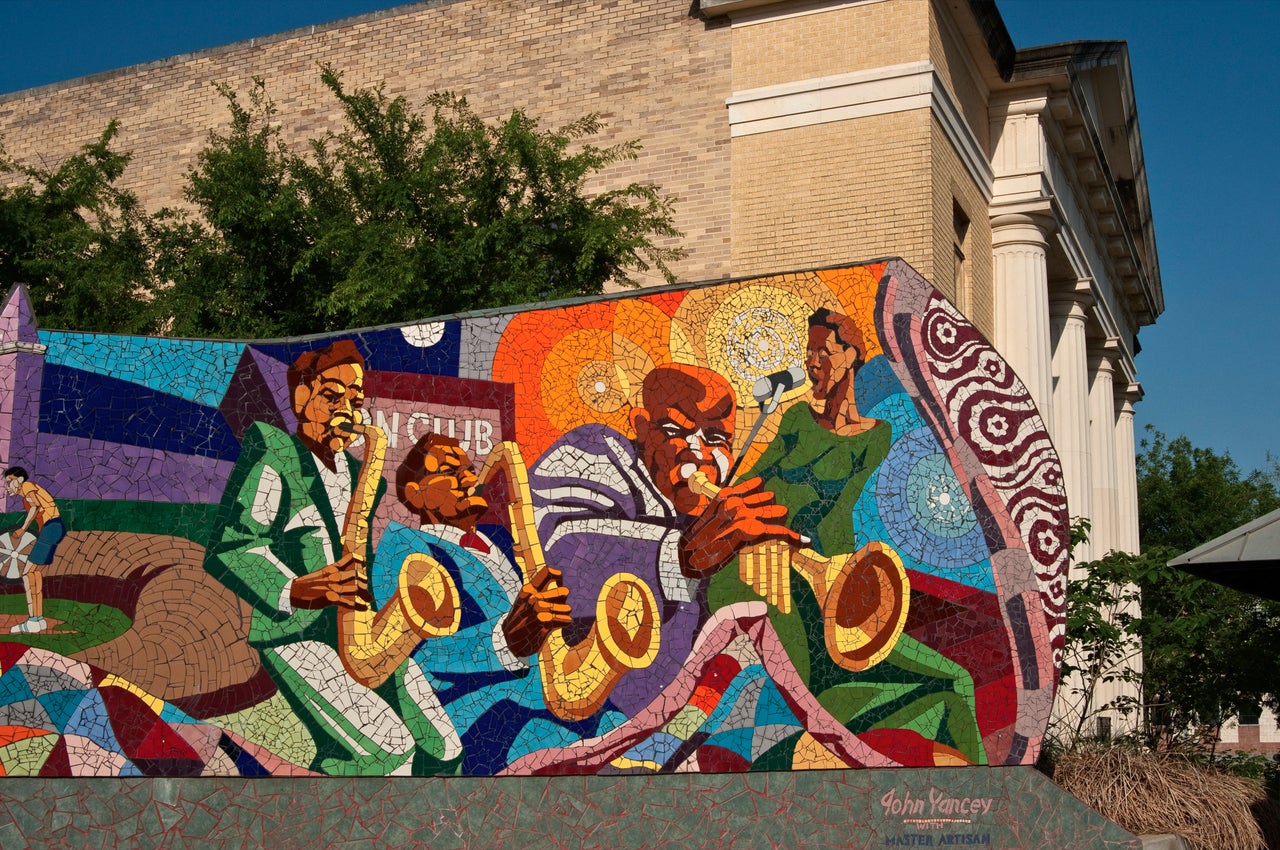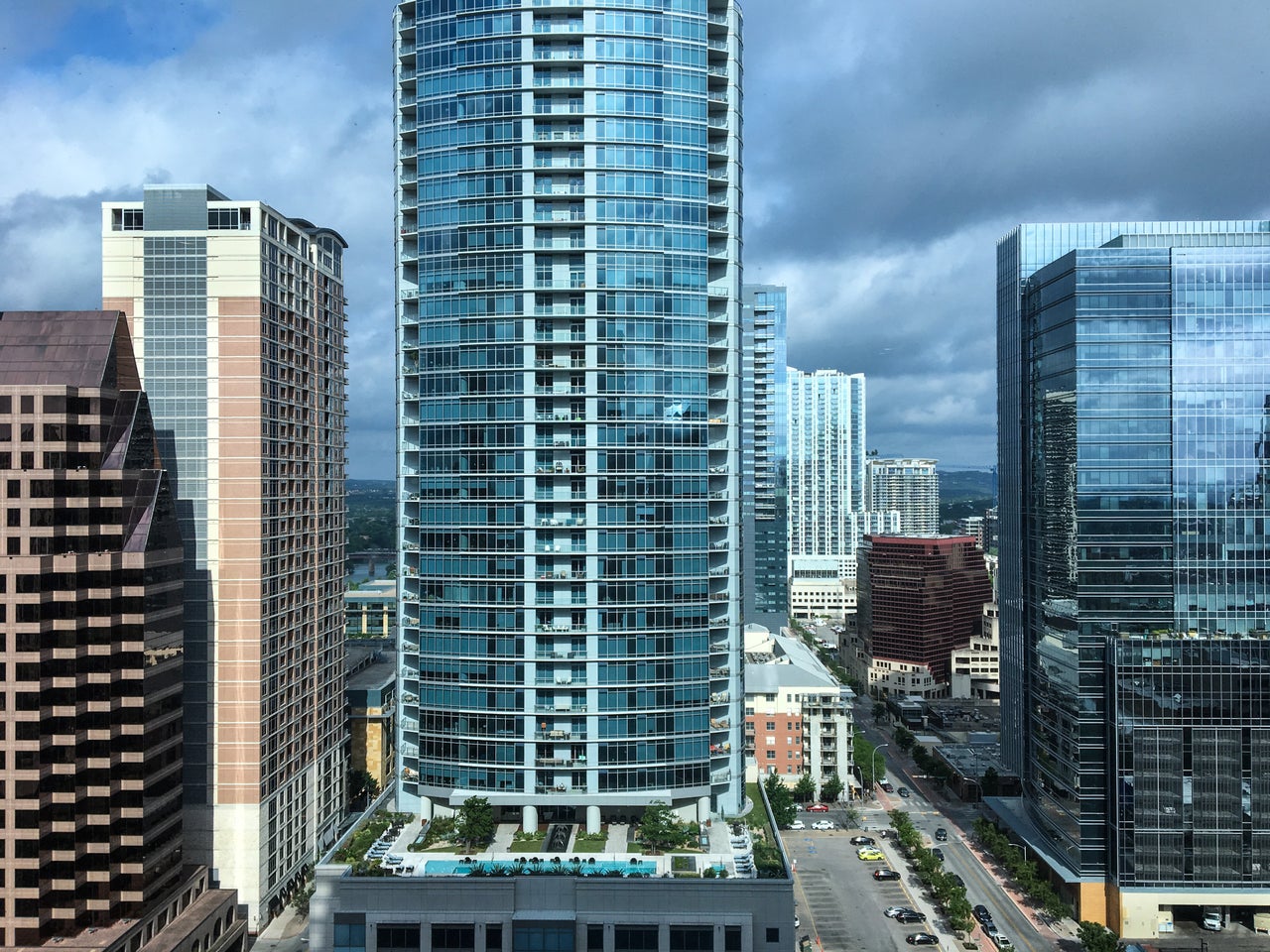It started with a letter in Bettye Washington’s mailbox. “Move out, move on,” the letter said, as if leaving East Austin after spending 80 years there would be a simple choice. Then came the phone calls from eager-sounding men and women — realtors, developers, and opportunists of all types — explaining how they just loved Washington’s house, a “shotgun shack” built in the 1970s.
Washington, 85, handles each call by politely saying she is not interested in selling. “Every time they buy one of my neighbor’s houses, they put up one of those mansions and the taxes go up,” Washington said. “It’s been a rugged ride, but I’m still going. I’m in overtime, but I’ll outride them yet.”

This isn’t a new phenomenon. Washington has a basketful of letters and flyers, collected over years, encouraging her to sell the home she’s been in for more than 40 years. It’s a part of life in the now-trendy community.
The real problem is what all this interest in her neighborhood has done to East Austin itself.
“I thought gentrification was supposed to be a good thing, that it was supposed to make the neighborhood nicer, and improve things for us, but it’s not been that,” Washington said. “It’s pushed so many of us out.”
City authorities have come up with a new plan to try to help residents at risk of displacement as well as those already forced out. In March, Kathie Tovo, representative and mayor pro tem for Austin City Council, penned a resolution to create a “right to return” ordinance, aiming to prioritize access to affordable housing for residents with generational ties to East Austin and other gentrifying parts of the city. “We are losing these longtime residents. We have to use everything in our toolbox to help them,” said Tovo.
How the ordinance will work in practice is still unclear. The Austin city manager now has until May 25 to come up with wording that fits within state laws and the federal Fair Housing Act, which forbids decision-making based on race.
Clues may be found in a similar “right to return” scheme launched last year in Portland, Oregon. The city is offering down payment assistance to people with long-term ties to the rapidly gentrifying city, who have been displaced or are at risk of displacement. It scores applicants on a points-based system, with top priority given to people whose land was seized by the city government.
However, that scheme also indicates the potential challenges of such a policy. Of the more than 1,100 people who applied, Portland only has the funds to help 65 families. So far, just a handful of people have successfully used the program to secure homes.
Gentrification is a knotty issue, and critics suggest “right to return” policies have little chance of success.
“If it was easy to fix, it would have been fixed by now,” said Fred McGhee, an advocate for affordable urban housing in East Austin. “Some people think that things are going to have to get worse because then people are going to be willing to take to the streets and demand that this unfair economy be changed.”
Pointing to the city’s history of resolutions, task forces and councils, including the Anti-Displacement Task Force — made up of experts, community leaders and activists — set up by Austin Mayor Steve Adler in February, McGhee said: “It’s a structural way of governing that allows for plausible deniability. We do the work, and we make our report to the city council, and then they don’t do anything with it,” McGhee said.
Austin, now one of the fastest-gentrifying cities in the U.S., has a long history of inequality. And East Austin has been at the frontline. City officials deliberately drove African-Americans and Hispanic residents into the neighborhood as part of the city’s 1928 master plan. The city would only run utilities to their homes if they were in East Austin and made sure that, pre-desegregation, the black schools were built in that neighborhood.
“East Austin was created as a reservation for the black and brown people — that’s what people called it,” said Daniel Llanes, a longtime East Austin resident and community activist. “But in the early ’90s, the city council did a blanket rezoning of East Austin. When that happened, it accelerated gentrification here, because the properties that had been residential suddenly had the ability to be commercial, so the property owners pushed residents out and got commercial renters in because they could.”
A study by the University of Texas in 2017 found that in East Austin, a once predominantly low to moderate income African-American and Mexican-American neighborhood, saw a 442 percent increase of white residents between 2000 and 2010, while its African-American population dropped by 66 percent.
People left East Austin for a variety of reasons, but the bulk of those who moved away — more than half, according to UT survey results — did so because housing was no longer affordable.
Relocating to suburbs such as Pflugerville, Round Rock and Manor has often meant increased transport costs, and less access to grocery stores and health care.
“These are suburbs to the extent that they’re outside the urban core. But they are not a move up for people. They’re simply a move out,” UT study author Professor Eric Tang told NPR.

For those that remain, the impacts of gentrification are also felt. Washington’s family moved to the East Austin in 1936, when she was just 3 years old, so that her father, a cement finisher, could get work during the Great Depression. She loved the neighborhood and, after marrying, she and her husband saved up their money — at one point she was working two jobs in addition to her day job as a teacher — and bought an empty lot where they built the house she now lives in.
Starting in 2000, Washington noticed a change in the community. As her neighbors died or moved into retirement homes, their houses were overhauled and expanded, or knocked down and rebuilt. Along the way, developers were eliminating affordable housing in an area that had historically been home to low-income families.
“Those little houses, some of them were nice and had been kept up. They weren’t fancy, but a family without a lot of money could have afforded one. I don’t see them building houses like that anymore,” Washington said.
As the housing market becomes less affordable — rents rose 50 percent in the city between 2004 and 2013, while the average house price in East Austin tripled from $125,000 to $375,000 between 2011 and 2014 — affordable housing stocks are falling. The number of units needed went from 40,000 in 2012 to more than 48,000 by 2014.
“The developers come in and the city council lets them pay into a fund instead of actually building affordable housing on their properties, and it’s a mistake,” council member Tovo said.
While Austin’s experience is part of a wider U.S. affordable housing crisis, the city is particularly affected, said Susan Popkin, a senior fellow at The Urban Institute, a D.C.-based social policy think tank. “The need that we’re seeing in the country is even worse in Austin, which has some of the worst economic segregation in the country.” Black households in Austin bring in about $50,820 per year to white households’ average of $97,939, according to a 2016 city demographer report.
City authorities have an uphill battle to address these systemic problems. And even if the “right to return” policy is enacted, it’s unclear how much impact it would have.
Tovo said it will make a difference for people, that they will be eager to come back to neighborhoods where they have longstanding ties. But finding a way to come back is just the start of the challenges those returning may face, Popkin said.
“We know how to redevelop a distressed neighborhood and make it nice, but we have yet to see it still be a place where the people who live there at the start of that redevelopment still feel like it’s the place they know,” she noted. “Moving back isn’t always as easy as people might think.”
For more content and to be part of the ‘This New World’ community, join our Facebook Group.
HuffPost’s ‘This New World’ series is funded by Partners for a New Economy and the Kendeda Fund. All content is editorially independent, with no influence or input from the foundations. If you’d like to contribute a post to the editorial series, send an email to thisnewworld@huffpost.com